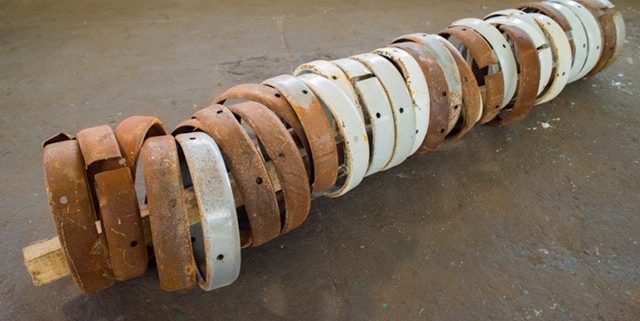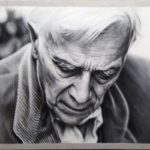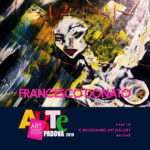Olu Oguibe – CUBA PROJECT – Galleria Giampaolo Abbondio – Milano
Olu Oguibe
CUBA PROJECT
Milano
vernissage 8 ottobre ore 18.30
“Il recente lavoro di Olu Oguibe a Cuba esemplifica il suo approccio e il rispetto per le persone. L’artista ha lavorato con materiali semplici, prodotti di scarto di un processo di produzione ad alto impiego di manodopera, e li ha riconfigurati in un modo che ha portato alla mente il significato e la ruvida bellezza che stanno alla base del processo di fabbricazione, e le mani e le anime coinvolte in esso. Il rispetto per i lavoratori, per il lavoro, per il processo, tutto arriva, insieme alla capacità quasi alchemica di trasformare materiali quotidiani in oggetti soffusi di significati.”
– Will Wilkins
I 25 pezzi che compongono questo gruppo d’opere sono il risultato di alcune settimane trascorse presso l’acciaieria UEB “Noel Fernández” Conformat di Mantanzas, Cuba, nel febbraio 2019.
Ho visitato la fabbrica per la prima volta nel dicembre 2018 in compagnia dell’artista cubana Marìa Magdalena Campos-Pons, e ho deciso di tornarci quasi subito per lavorare con i rottami metallici del pavimento della fabbrica che solitamente vengono scartati o destinati al riciclaggio. L’acciaio è un mezzo che non ho usato molto in passato, e lavorare presso la fabbrica mi ha dato l’opportunità di esplorare il materiale senza gli ingombri della fabbricazione. Non avevo intenzione di “costruire” oggetti, ma piuttosto di seguire il materiale così come si presentava, e qualunque cosa esso suggerisse, che, a mio avviso, è un modo molto liberatorio di lavorare.
Per un periodo di circa nove giorni il mio traduttore, Mr. Matos, ed io abbiamo perlustrato i pavimenti della fabbrica per reperire rottami metallici che abbiamo poi assemblato in una grande ala di stoccaggio della struttura. Oltre alla forma, che era il mio obiettivo primario, mi interessava anche l’ampio spettro delle possibilità cromatiche nell’acciaio industriale che non richiedono ulteriori interventi. Anche la gamma di ruggine è affascinante, e certamente suggerisce che la tendenza monocromatica di molta scultura minimalista è forse manierista e inutile.
Questo corpus di opere è significativo sotto molti aspetti. Sebbene non rappresenti una direzione completamente nuova nella mia pratica, questa è, tuttavia, la prima volta che ho riunito un gruppo così ampio di sculture o installazioni scultoree in un unico progetto, e come già osservato, è certamente la mia più significativa avventura nell’acciaio come materiale.
L’opera può essere vista in molti modi diversi; scultura minimalista, recupero creativo di materiali “poveri”, o esercizio di archeologia del lavoro. Tutto ruota ancora intorno alla potente risonanza della forma, ma gli oggetti documenteranno per sempre un momento unico nella storia del lavoro industriale nella Cuba tardo rivoluzionaria.
-Olu Oguibe
“Olu Oguibe’s recent work in Cuba exemplifies his approach and respect for people. He worked with simple materials, scrap products of a labor-intensive manufacturing process, and reconfigured them in a way that brought to mind the meaning and rough beauty underlying the process of making, and the hands and souls involved in it. A respect for working people, for labor, for process, all come through, along with the nearly alchemical ability to transform quotidian materials into objects suffused with meanings.”
– Will Wilkins
The 25 pieces in this body of work are the result of a few weeks spent at UEB “Noel Fernández” Conformat steel factory in Mantanzas, Cuba in February 2019.
I first visited the factory in December 2018 in the company of Cuban artist Marìa Magdalena Campos-Pons, and decided to return soon after and work with the scrap metal from the factory floor which is usually discarded or sent for recycling. Steel is a medium that I have not used much in the past, and working at the factory offered an opportunity to explore the material without the encumbrances of fabrication. I did not intend to “construct” objects, but rather, to follow the material as found, and whatever it suggested, which in my thinking, is a very liberating way to work.
Over a period of nine days or so my translator Mr. Matos and I scoured the factory grounds for scrap metal which we then assembled in a large storage wing of the facility. Beside form which was my primary focus, I was interested also in the broad spectrum of color possibilities in industrial steel that do not require additional intervention. Even the range of rust is fascinating, and certainly suggests that the monochrome tendency of much minimalist sculpture is perhaps mannerist and unnecessary.
This body of work is significant in many ways. While it does not represent an entirely new direction in my practice, this is, nonetheless, the first time that I’ve put together such a large body of sculptures or sculptural installations in a single project, and as already noted, it’s certainly my most significant venture into steel as a material.
The work may be viewed in any number of different ways; as minimalist sculpture, as creative recuperation of “poor” materials, or as an exercise in the archaeology of labor. It all still revolves around the potent resonance of form, but the objects will always record a unique period in the history of industrial labor in late revolutionary Cuba.
-Olu Oguibe




